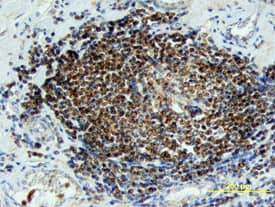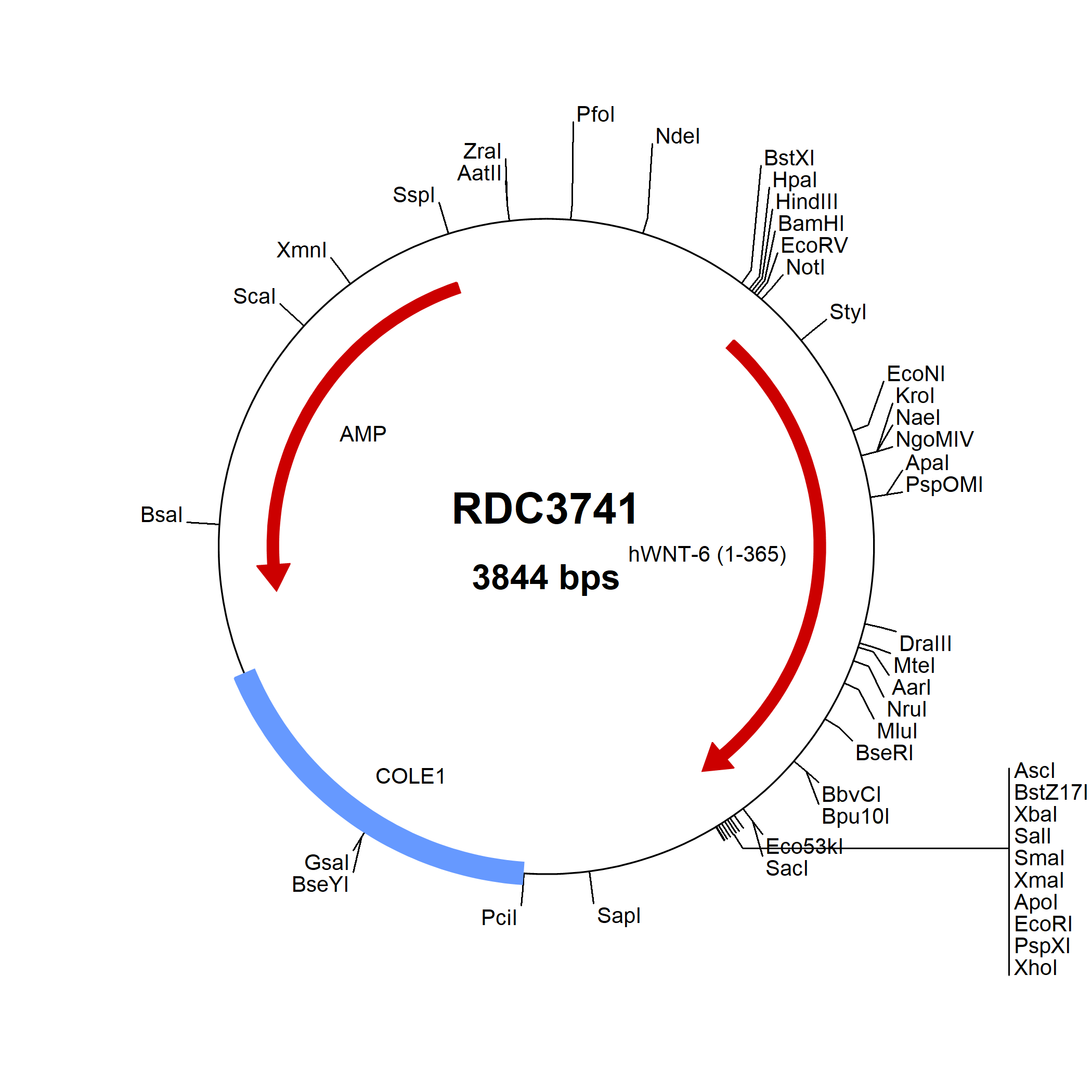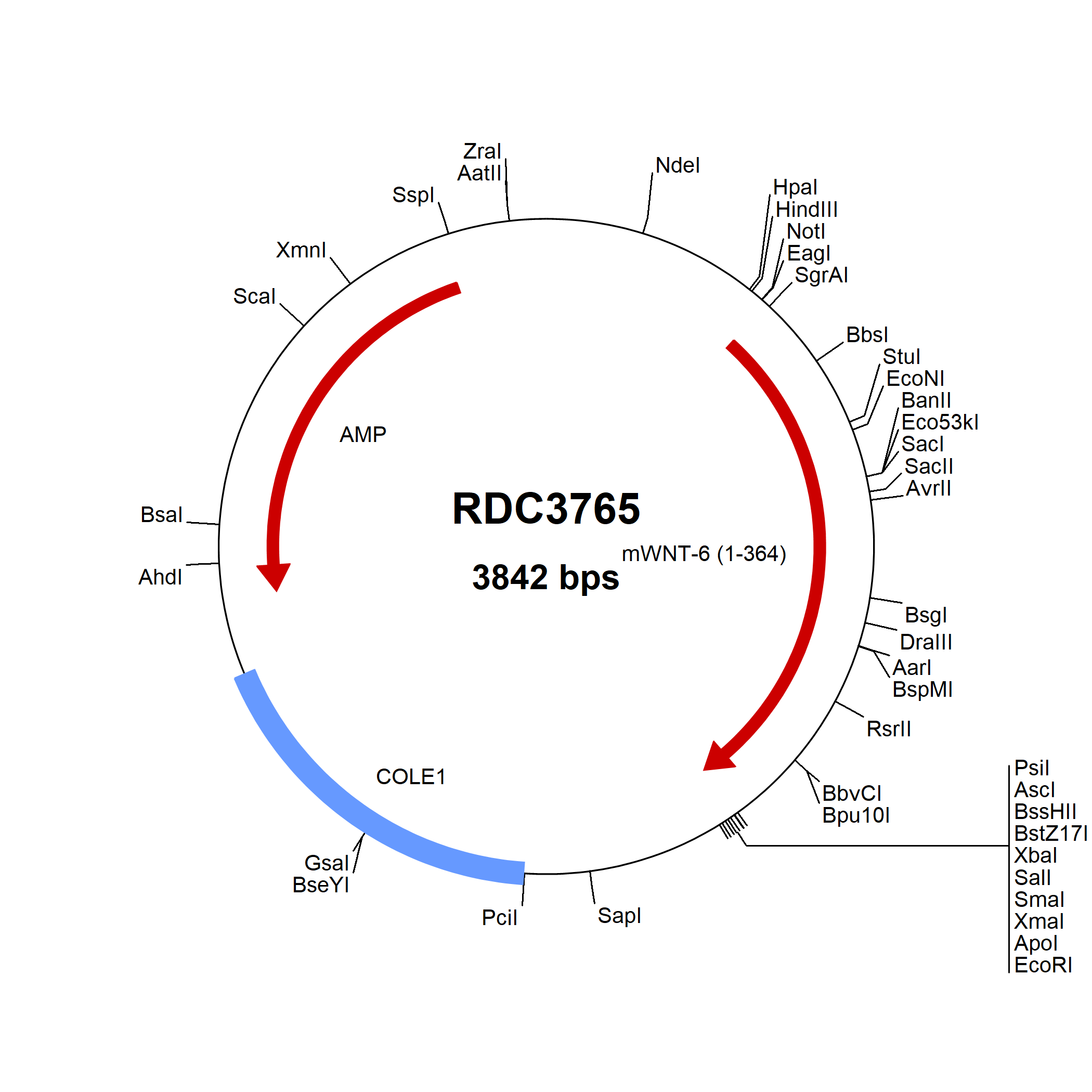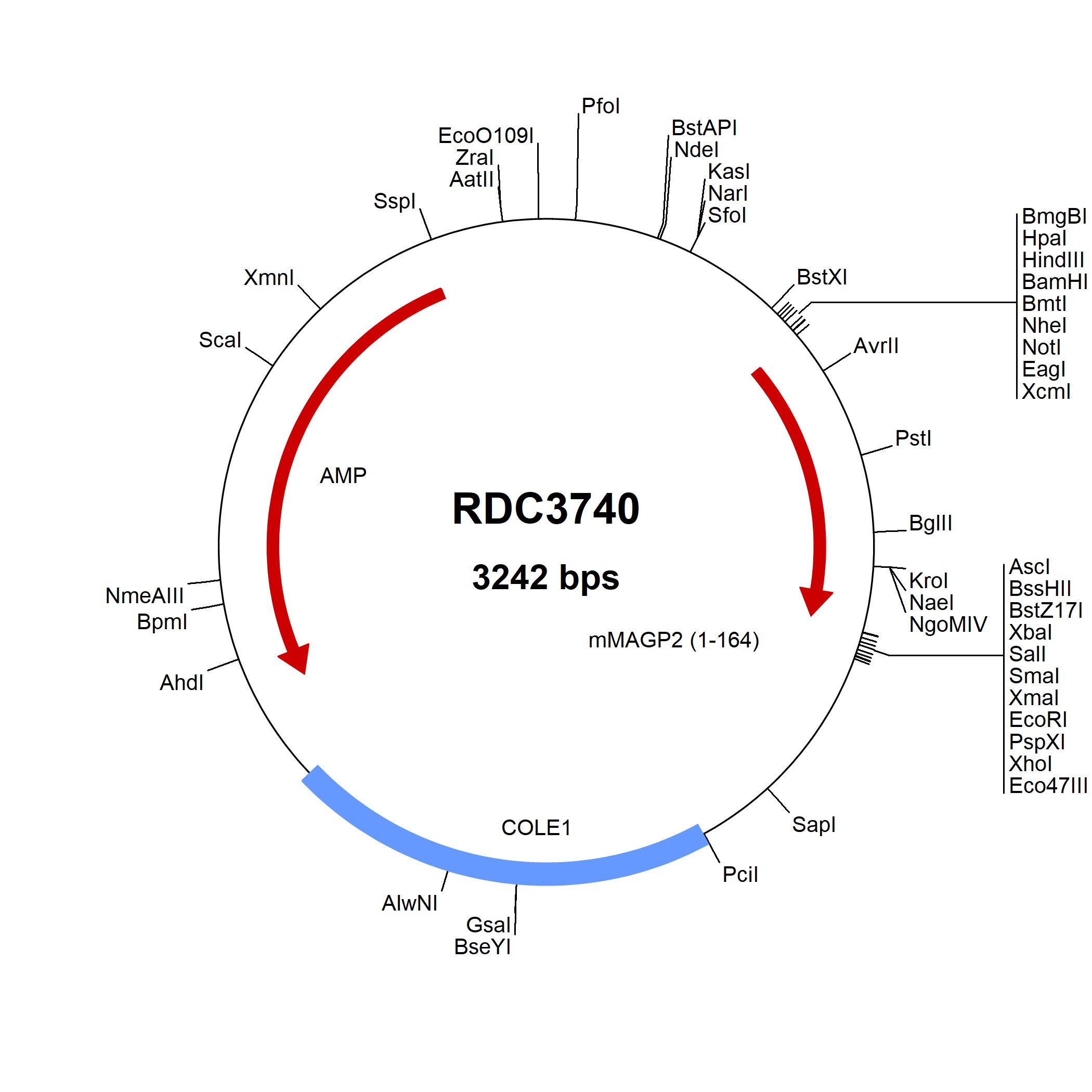Wnt-6 Products
Wnt-6 is a 46 kDa, secreted, glycoprotein of the Wnt family. Wnt-6 is produced by mammary fibroblasts and ductal epithelium, intestinal crypt cells and limb bud ectoderm. Wnt-6 has been implicated in the process of limb myogenesis. Human Wnt-6 is synthesized as a 365 amino acid (aa) precursor that contains a 341 aa mature region. The mature Wnt-6 molecule contains 24 cysteines and one potential N-linked glycosylation site.
The Wnts make up a large family of secreted proteins with roles in pattern formation, cell fate decision, axon guidance, and tumor formation. Wnt family members vary in length between 350 and 400 aa, possess 22 to 24 conserved cysteines, are highly hydrophobic, and show 20 - 85% aa identity within the Wnt family. In general, there are three signaling pathways associated with Wnt-receptor interaction. The first is commonly called the canonical pathway and ultimately culminates in beta-Catenin accumulation and TCF/LEF-1-mediated gene transcription. The other two less well-defined non-canonical pathways include the Wnt/Ca2+ pathway and the planar cell polarity (PCP) pathway.
12 results for "Wnt-6" in Products
12 results for "Wnt-6" in Products
Wnt-6 Products
Wnt-6 is a 46 kDa, secreted, glycoprotein of the Wnt family. Wnt-6 is produced by mammary fibroblasts and ductal epithelium, intestinal crypt cells and limb bud ectoderm. Wnt-6 has been implicated in the process of limb myogenesis. Human Wnt-6 is synthesized as a 365 amino acid (aa) precursor that contains a 341 aa mature region. The mature Wnt-6 molecule contains 24 cysteines and one potential N-linked glycosylation site.
The Wnts make up a large family of secreted proteins with roles in pattern formation, cell fate decision, axon guidance, and tumor formation. Wnt family members vary in length between 350 and 400 aa, possess 22 to 24 conserved cysteines, are highly hydrophobic, and show 20 - 85% aa identity within the Wnt family. In general, there are three signaling pathways associated with Wnt-receptor interaction. The first is commonly called the canonical pathway and ultimately culminates in beta-Catenin accumulation and TCF/LEF-1-mediated gene transcription. The other two less well-defined non-canonical pathways include the Wnt/Ca2+ pathway and the planar cell polarity (PCP) pathway.
| Reactivity: | Human |
| Details: | Sheep IgG Polyclonal |
| Applications: | WB, IHC |
Recombinant Monoclonal Antibody
| Reactivity: | Human, Rat |
| Details: | Rabbit IgG Monoclonal Clone #HL1568 |
| Applications: | IHC, WB, ICC/IF |
| Applications: | WB |
| Applications: | WB, ELISA, MA, AP |
| Reactivity: | Human, Canine, Bovine, Rabbit, Equine, +1 More |
| Details: | Rabbit IgG Polyclonal |
| Applications: | IHC |
| Reactivity: | Human |
| Details: | Rabbit IgG Polyclonal |
| Applications: | WB |
| Reactivity: | Human |
| Details: | Rabbit IgG Polyclonal |
| Applications: | WB |
| Reactivity: | Human |
| Details: | Rabbit IgG Polyclonal |
| Applications: | IHC |
| Reactivity: | Human |
| Details: | Rabbit Polyclonal |
| Applications: | IHC |




![Immunocytochemistry/Immunofluorescence: Wnt-6 Antibody (HL1568) - Azide and BSA Free [NBP3-25754] - Wnt-6 Antibody (HL1568) - Azide and BSA Free](https://resources.bio-techne.com/images/products/nbp3-25754_rabbit-wnt-6-mab-hl1568-azide-and-bsa-free-212024939127.jpg)

![Western Blot: Wnt-6 Overexpression Lysate [NBL1-17875] Western Blot: Wnt-6 Overexpression Lysate [NBL1-17875]](https://resources.bio-techne.com/images/products/Wnt6-Overexpression-Lysate-Adult-Normal-Western-Blot-NBL1-17875-img0002.jpg)

![SDS-PAGE: Recombinant Human Wnt-6 GST (N-Term) Protein [H00007475-P01] SDS-PAGE: Recombinant Human Wnt-6 GST (N-Term) Protein [H00007475-P01]](https://resources.bio-techne.com/images/products/Recombinant-Human-Wnt-6-Protein-SDS-Page-H00007475-P01-img0002.jpg)
![Immunohistochemistry-Paraffin: Wnt-6 Antibody - BSA Free [NB110-55627] Immunohistochemistry-Paraffin: Wnt-6 Antibody - BSA Free [NB110-55627]](https://resources.bio-techne.com/images/products/Wnt-6-Antibody-Immunohistochemistry-Paraffin-NB110-55627-img0001.jpg)
![Western Blot: Wnt-6 Antibody [NBP1-62305] Western Blot: Wnt-6 Antibody [NBP1-62305]](https://resources.bio-techne.com/images/products/Wnt-6-Antibody-Western-Blot-NBP1-62305-img0003.jpg)
![Western Blot: Wnt-6 Antibody [H00007475-D01P] Western Blot: Wnt-6 Antibody [H00007475-D01P]](https://resources.bio-techne.com/images/products/Wnt-6-Antibody-Western-Blot-H00007475-D01P-img0003.jpg)
![Immunohistochemistry-Paraffin: Wnt-6 Antibody [NBP2-68908] Immunohistochemistry-Paraffin: Wnt-6 Antibody [NBP2-68908]](https://resources.bio-techne.com/images/products/Wnt-6-Antibody-Immunohistochemistry-NBP2-68908-img0001.jpg)
![Immunohistochemistry-Paraffin: Wnt-6 Antibody [NBP3-14521] Immunohistochemistry-Paraffin: Wnt-6 Antibody [NBP3-14521]](https://resources.bio-techne.com/images/products/Wnt-6)